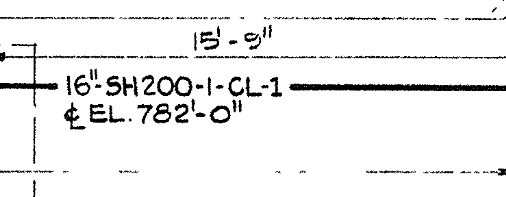HDStructural
Structural
Hello All,
I am foreign to the piping thread but have a question that may be easy for you to answer. I am analyzing existing pipe bents to see if the structure and foundations can take any more load. Looking through the existing drawings, I am unable to determine the steam pipe size (16" SH200-1-CL-1). There are not other sheets that clarify what the other information is. It is clearly a 16" pipe but I am not sure what the pipe thickness is. Any help is appreciated.
For reference, this was built in the 70's and is located in the Northeast (USA).
Thanks

I am foreign to the piping thread but have a question that may be easy for you to answer. I am analyzing existing pipe bents to see if the structure and foundations can take any more load. Looking through the existing drawings, I am unable to determine the steam pipe size (16" SH200-1-CL-1). There are not other sheets that clarify what the other information is. It is clearly a 16" pipe but I am not sure what the pipe thickness is. Any help is appreciated.
For reference, this was built in the 70's and is located in the Northeast (USA).
Thanks

